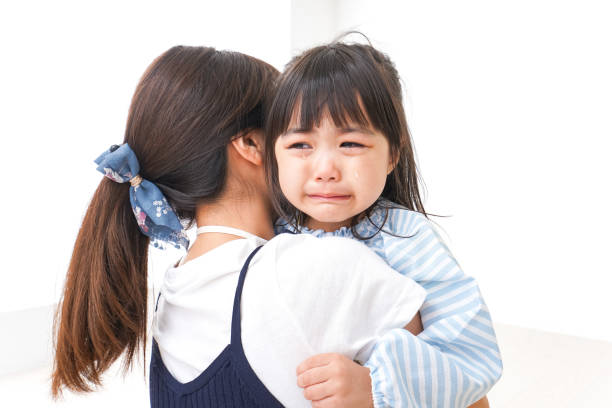Tantrums are one of the most common — and most challenging — parts of raising little ones. Whether it’s a toddler who crumples on the floor at the word “no,” or a preschooler wailing over the wrong color cup, these moments can leave even the calmest parent feeling overwhelmed.
But here’s the gentle truth: tantrums aren’t bad behavior. They’re your child’s way of saying, “I’m having a hard time and I don’t know how to handle it yet.”
Here’s a gentle, step-by-step look at why tantrums happen, and 7 ways you can respond with calm, connection, and compassion.
Why do kids have tantrums?
Tantrums are a normal part of child development. They usually peak between 1 and 4 years old, as children start to experience strong emotions — frustration, disappointment, anger, excitement — but don’t yet have the words or brain skills to cope.
Some common reasons include:
- Overwhelm: too many new experiences or noisy environments.
- Hunger or tiredness: basic needs unmet.
- Desire for independence: wanting to do things themselves or make choices.
- Limits: being told “no” or having something taken away.
- Big transitions: moving, a new sibling, starting preschool.
Tantrums are not your child trying to manipulate you — they’re developmentally appropriate reactions when their emotional cup spills over.
1. Understand the real reasons behind tantrums

Children — especially toddlers and preschoolers — are still so new to the world of big emotions. Their brains are rapidly developing, but the areas that help them manage frustration, cope with disappointment, or process sudden changes are still very much under construction.
Imagine being flooded with feelings but not yet having the words or the inner brakes to slow them down. That’s what it’s like for young children. They experience each emotion with raw intensity, without the filters that adults have spent years building.
So when they’re tired, hungry, overstimulated by a busy day, or simply sad because something didn’t go the way they hoped, they can’t calmly express,
“I’m feeling overwhelmed right now. I need a break.”
Instead, all of that discomfort and confusion bubbles up and overflows in the form of a tantrum. Crying, screaming, or throwing themselves on the floor is their natural way of releasing the stress they don’t yet know how to handle.
Understanding this — truly pausing to see that a tantrum isn’t bad behavior, but a child struggling with feelings too big for their tiny body — changes everything.
It invites you to respond not with frustration, but with empathy. You realize your child isn’t trying to make your day harder; they’re reaching out for help in the only way they know how right now.
2. Stay calm yourself (your calm is their anchor)

When your child is losing control, what they need most is for you to stay steady.
In that whirlwind of big emotions, your calm presence becomes their anchor.
Take a slow, deep breath. Unclench your jaw. Feel your shoulders soften. And gently remind yourself:
“They’re having a hard time — not giving me a hard time.”
This tiny shift in perspective can transform the moment from a battle into an opportunity for connection.
It’s perfectly human to feel triggered when your child is screaming or thrashing. Your own stress response might kick in — your heart racing, your voice wanting to rise. That’s normal.
When this happens, it’s okay to pause. Give yourself a moment to collect your thoughts before stepping in. Sometimes that means taking two deep breaths, or gently counting to five in your head.
Remember: your calm nervous system actually helps soothe theirs.
Children look to us to figure out if the world is still safe. By showing them that even big feelings can be met with gentle steadiness, you’re teaching them one of the most powerful lessons they’ll ever learn.
3. Keep them safe and stay close

If your child is thrashing, hitting, or seems like they might hurt themselves, your first priority is to keep them safe.
Gently guide them to a softer area, like a rug or a cushioned spot on the floor. If they’re flailing their arms or kicking, you can softly block their hands or legs — not to restrain them harshly, but simply to prevent them from hurting themselves or others.
All the while, try to stay calm and grounded.
Even if they push you away, yell, or turn their back on you, your quiet presence nearby is deeply reassuring. It silently tells them,
“You’re not alone in this storm. I’m right here with you until it passes.”
You might softly say,
“I see how upset you are. I’m here. You’re safe.”
These simple, gentle words — combined with your calm energy — help your child feel held and understood, even when they can’t accept a hug or comforting touch in that moment.
It may not seem like it’s making a difference, but over time, your steady support teaches them that big feelings can come and go — and love remains.
4. Skip logic talks in the heat of the moment

When your child is in the middle of a full meltdown, their brain isn’t in a place to think things through or listen to explanations.
In these heated moments, their nervous system shifts into fight-or-flight mode — the same primal reaction we all have when we feel threatened or overwhelmed. Blood rushes away from the parts of the brain responsible for logic and reasoning, straight to the parts that handle pure survival.
That means they quite literally cannot process cause-and-effect, new rules, or thoughtful discussions right now. Trying to reason with them in the middle of their storm often leads to more frustration for both of you.
Instead, let go of the need to teach or correct in that moment.
Focus on simply being a calm, grounding presence. Your steady breathing, soft voice, and patient silence speak louder than any words could.
There will be time later — once the waves of emotion have settled — to gently talk through what happened and explore better ways to handle big feelings.
But right now, your child doesn’t need a lesson. They need your calm, reassuring presence to ride out the storm together.
5. Offer comfort & reconnect after the storm

Once the crying or yelling starts to fade and you notice your child’s body softening, that’s your gentle invitation to reconnect.
Offer a calm hug, pull them into your lap, or simply sit close by. Sometimes just resting your hand on their back or quietly sharing space is enough. This closeness rebuilds their sense of safety and security after the intensity of their emotions.
It’s in these quiet, tender moments that you show your child — without any doubt — that love stays, even when things get hard. That no amount of tears or upset can push you away.
When they’re ready, you can softly say something like:
“Wow, that was a lot of big feelings. You were really upset. I’m so glad we’re together now.”
This simple reflection does so much. It helps your child start to make sense of what they just felt. It tells them their emotions are real and okay. And most of all, it reassures them that even the stormiest moments don’t change your love.
Over time, these calm reunions after a meltdown teach your child one of life’s most comforting truths:
feelings come and go, but love stays steady.
6. Name feelings & teach gentle coping over time

As your child begins to settle, their mind and body shift out of overwhelm — opening a gentle window to learn and grow. This is a tender moment when you can start to help them make sense of what they felt, and build the lifelong skill of understanding their emotions.
You might softly reflect what you observed, giving their big feelings a name:
“You were really frustrated when we had to leave the park. It’s hard to stop when you’re having so much fun.”
Simple statements like this do so much more than just describe what happened. They show your child that all feelings — even the messy, uncomfortable ones — are safe to notice, talk about, and move through.
Over time, you can gently introduce small ways to handle these big emotions together. Try things like:
- Taking slow, deep belly breaths while you count to three, letting them feel your calm rhythm.
- Squeezing a pillow or stuffed animal, channeling that burst of energy into something soft.
- Drawing, building with blocks, or pretend play to act out what happened in a safe way.
These little practices become your child’s early toolkit — alternatives to melting down that they’ll slowly reach for on their own.
It won’t be perfect or quick. But with your steady guidance and loving example, they’ll learn that feelings don’t have to stay bottled up or explode. They can be felt, named, and then gently carried together.
7. Prevent some tantrums with calm routines & choices

You can’t — and truly shouldn’t — stop all tantrums. They’re a natural, healthy part of how young brains develop. Each meltdown is actually a chance for your child’s nervous system to practice moving through big feelings with your support.
But while tantrums are normal, there are gentle ways you can help reduce how often or how intense they are, simply by shaping your days with calm, thoughtful care.
Keep a simple, predictable daily rhythm.
Regular times for meals, naps, play, and quiet rest give your child’s little body and mind a sense of security. Predictability eases anxiety and helps them know what’s coming next.
Offer small, age-appropriate choices.
Letting your child have tiny moments of control reduces power struggles and builds confidence.
You might say:
“Do you want to brush your teeth before or after we put on pajamas?”
These small decisions feel big to them — and help fill their cup for cooperation.
Watch for hidden triggers.
Many tantrums blossom simply because your child is tired, hungry, or overstimulated. Try to pause and notice: “When did they last eat? Have we had enough quiet time today?”
Create peaceful wind-down times.
Especially before bed, keep the environment soft — dim the lights, put away screens, and share a calming story. This helps soothe their system, making big emotions less likely to overflow.
The more your child feels gently in control of small parts of their world, and knows what to expect, the safer and more settled they’ll feel overall.
💖 A gentle reminder for you
Parenting through tantrums can be exhausting and emotional. Some days you’ll stay calm and grounded; other days you might raise your voice or feel like you’ve failed. That’s okay.
This journey isn’t about perfection — it’s about showing up with love, repairing when needed, and growing together.
Each meltdown you navigate with empathy builds trust and teaches your child that all feelings can be handled — and that love is always here, steady and sure.
✨ Want more mindful parenting support?
Sign up for our PeacePebble emails to get calm tips, gentle activities, and encouragement sent right to your inbox. 💕

